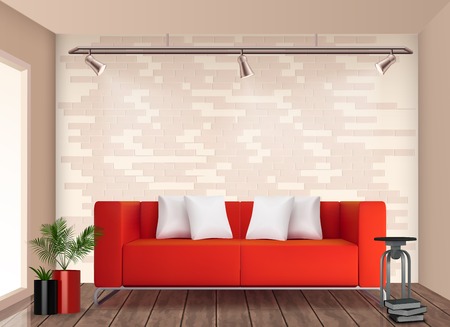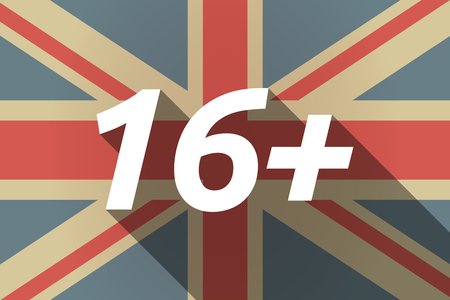Introduction to British Colour Palettes
In the context of British culture, colour is far more than a visual attribute—it is a language that communicates heritage, identity, and social nuance. The evolution of British colour palettes mirrors the nation’s rich tapestry of history, regional diversity, and shifting design sensibilities. From the restrained elegance of Georgian interiors to the bold statements of post-war modernism, each era has left an indelible mark on how Britons use and perceive colour. Understanding these palettes requires appreciating the subtle interplay between tradition and innovation, as well as the unique British propensity for understated sophistication and wit in design. Whether found in the muted tones of a Cotswold cottage or the vibrant facades of Notting Hill, colour choices in Britain are deeply contextual—shaped by landscape, climate, language, and centuries-old customs. This article explores how historic influences continue to inform contemporary trends, offering insight into why certain hues resonate so profoundly within the UK’s visual landscape.
2. Historical Influences: From Georgian Elegance to Victorian Richness
The evolution of British colour palettes throughout the 18th and 19th centuries is a compelling reflection of wider societal shifts, technological innovation, and global exchange. During the Georgian era, spanning from 1714 to 1830, colour choices were often guided by ideals of refinement and restraint. Subtle hues such as pale blues, sage greens, and soft greys dominated interiors, influenced by classical architecture and the Enlightenment’s emphasis on rationality. These colours not only reflected contemporary tastes but also indicated social status and adherence to fashionable trends.
Sociopolitical Changes and Colour Significance
The rise of the British Empire during this period brought with it exposure to new materials and pigments from abroad. Trade with India, China, and the West Indies introduced vibrant dyes and exotic motifs into British homes. The growing middle class aspired to emulate aristocratic tastes, while political stability under Georgian monarchs allowed for more consistent aesthetic standards across society.
Paint Production Advancements
The early 19th century saw significant advancements in paint production technology. Innovations such as the development of synthetic pigments made colours more affordable and accessible. This democratization of colour coincided with the Industrial Revolution, which enabled mass production of wallpapers and paints. Suddenly, deep reds, rich blues, and bold yellows became available to a broader public.
Comparing Georgian and Victorian Colour Palettes
| Era | Typical Colours | Main Influences |
|---|---|---|
| Georgian (1714–1830) | Pale blue, sage green, stone grey, cream | Classical antiquity, Enlightenment ideals |
| Victorian (1837–1901) | Burgundy, forest green, ochre yellow, navy blue | Industrial innovation, imperial expansion |
The Victorian era embraced deeper and more saturated colours—reflecting both industrial progress and a fascination with opulence. Innovations such as William Perkin’s discovery of mauveine in 1856 brought unprecedented vibrancy to textiles and wall coverings. Meanwhile, global influences continued to shape domestic aesthetics; oriental patterns and jewel-like shades became synonymous with wealth and worldliness.

3. Modernism and the Mid-Century Shift
Postwar Britain was a period marked by profound social and cultural transformation, which was vividly reflected in its colour palettes. The devastation of World War II left much of the country in need of renewal—not only physically, but also emotionally. Enter modernism: a design movement that championed minimalism, functionality, and a clean break from ornate Victorian traditions. British homes and public spaces saw a move towards simplicity, with interiors favouring uncluttered lines and practical layouts. This new approach to living was mirrored in the colours chosen for walls, textiles, and furniture.
The mid-century shift introduced fresh palettes characterised by muted tones interspersed with bursts of optimistic hues. Pastel pinks, powder blues, soft yellows, and sage greens became popular, offering a sense of hope and brightness amid the austerity of postwar recovery. These shades were complemented by more utilitarian colours—greys, creams, and earthy browns—that reflected the practical mindset of the era. Paint manufacturers like Dulux responded to this demand by introducing new ranges specifically designed for smaller homes and multi-purpose rooms common in postwar housing estates.
This careful balance between optimism and practicality set the tone for British interiors throughout the 1950s and 60s. Colour choices were no longer just about aesthetics; they were about creating spaces that felt both uplifting and liveable within the constraints of limited resources. The legacy of this period endures today, with many contemporary British designers drawing inspiration from mid-century palettes to evoke nostalgia while keeping spaces functional and fresh.
4. Regional Variations and Iconic British Hues
The British Isles are renowned for their rich tapestry of landscapes, climates, and built environments, each exerting a profound influence on local colour palettes. Regional distinctions are particularly pronounced, with specific hues becoming synonymous with particular areas, helping to define both their cultural identity and aesthetic character.
Landscape as Palette: Colours Born from Nature
The dramatic contrasts between moorland, coastline, woodland, and urban centres have led to distinct regional palettes. For instance, the gentle blue of Cornishware ceramics reflects the soft light and coastal vistas of Cornwall. In contrast, the honeyed tones of Cotswold stone echo the rolling hills and limestone-rich soil of Gloucestershire and Oxfordshire. Meanwhile, the deep reds of London brick mirror the clay beds found beneath the capital’s streets.
Iconic British Colours by Region
| Region | Signature Hue | Origin/Influence |
|---|---|---|
| Cornwall | Cornish Blue | Inspired by sea views, sky, and traditional Cornishware pottery |
| Cotswolds | Cotswold Stone (Warm Honey) | Limestone geology shaping both landscape and architecture |
| London | London Brick Red | Local clay deposits used in Victorian-era construction |
| Scottish Highlands | Heather Purple & Slate Grey | Moorland flora and rugged rock formations |
| Liverpool & North West | Mersey Mist Grey | Frequent rainfall and riverine fogs influencing urban tone |
Weather’s Subtle Influence on Palette Choices
The famously variable British weather also plays a critical role in shaping regional colour sensibilities. Overcast skies often soften colours, encouraging the use of muted tones and subtle contrasts—attributes that are reflected in everything from interior paint choices to fashion. The interplay between light quality and material is central: bright sunlight in Cornwall enhances blues and whites, while persistent drizzle in Yorkshire brings out mossy greens and earthy browns.
This intimate relationship between place and palette continues to shape contemporary design trends across Britain. Whether consciously or not, modern designers draw upon this heritage—blending tradition with innovation—to create spaces that feel rooted yet fresh.
5. Contemporary British Trends: Sustainability and Heritage Reimagined
Modern British colour palettes are deeply informed by a dual consciousness: an enduring reverence for heritage and an acute awareness of sustainability. Today’s designers navigate this balance with ingenuity, drawing inspiration from the rich chromatic traditions of the past while addressing urgent environmental concerns and evolving lifestyle needs. The resurgence of earthy greens, muted blues, and chalky whites—tones reminiscent of Regency parlours or Victorian exteriors—signals a deliberate nod to history. However, these hues are now rendered in eco-friendly paints, recycled textiles, or responsibly sourced materials, reflecting a commitment to ethical practice.
British interiors increasingly favour locally produced pigments and natural dyes, echoing historical methods yet updated for contemporary sensibilities. This trend is seen not only in residential design but also in public spaces and retail environments that celebrate both provenance and planet. Designers reinterpret classic motifs such as William Morris florals or Arts & Crafts geometrics using modern techniques like digital printing on organic fabrics or upcycled surfaces, seamlessly merging nostalgia with innovation.
Moreover, minimalist lifestyles have influenced the British palette towards understated elegance—muted taupes, soft greys, and dusky pinks—offering tranquillity without sacrificing depth or character. This selective restraint harks back to Georgian sensibilities but serves today’s desire for calm, clutter-free environments. Ultimately, the contemporary British approach is experimental yet respectful: it honours historical colour stories while proactively shaping a sustainable future. Through this fusion of old and new, designers ensure that Britain’s colour palettes remain relevant, resonant, and responsible.
6. Conclusion: The Lasting Appeal of British Colour
The unique character of British colour palettes lies in their remarkable ability to balance tradition with innovation. From the muted, weathered tones inspired by historic architecture and landscapes, to the bold yet refined hues seen in contemporary design, British colours have always reflected a deep connection to cultural heritage and environmental context. This distinctive approach has ensured that British palettes remain not only relevant but influential on the global stage. Designers worldwide continue to draw inspiration from Britains nuanced use of colour, whether referencing Edwardian pastels or the vibrant contrasts of post-war modernism. As trends shift and new influences emerge, the British palette adapts—never static, always evolving—yet it consistently retains its signature understatement and elegance. In today’s interconnected world, this ongoing evolution ensures that British colour continues to captivate, offering a timeless yet contemporary aesthetic that speaks both locally and internationally.


